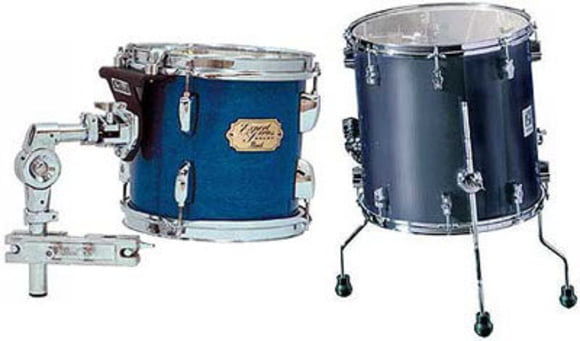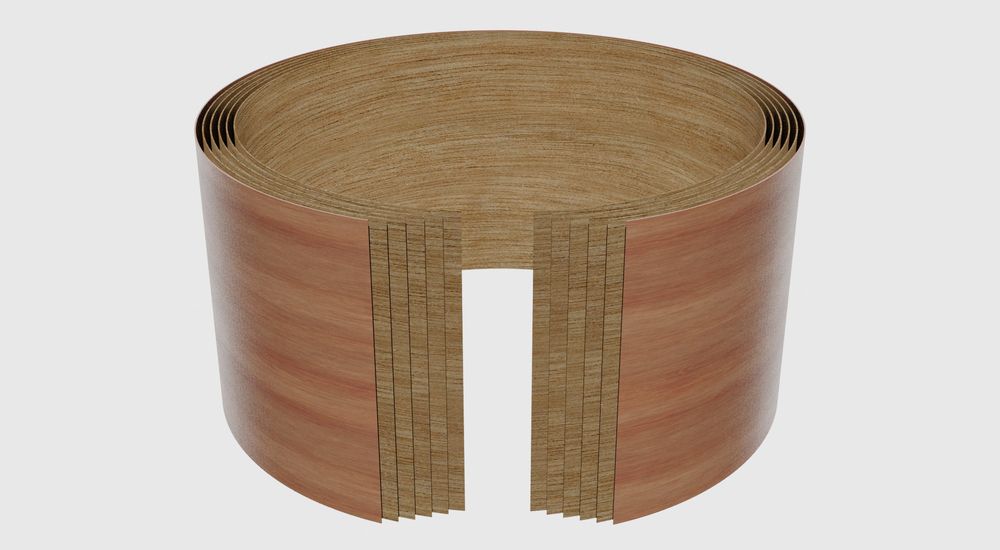5. Toms
"Tom-toms" is the correct term for these drums, but it is colloquially shortened to "toms". Toms are available in a wide variety of sizes, diameters and depths, which directly affects the volume of their sound. Small toms sound shorter and more compact, while large toms have a longer decay due to the larger head and deeper shell.

Example of a TomTom versus a Stand Tom
When speaking of toms, one differentiates between suspended toms (rack toms) and floor toms. The terms are self-explanatory: The former kind is suspended above the bass drum, while the latter kind is placed on the floor. A suspended tom always requires a matching holder or mount. All manufacturers make their own version of mounting system, which must be fairly sturdy to withstand the frequent impacts. Suspended toms can be mounted in a mounting location on top of the bass drum, with clamps on the cymbal stands or – mostly in bigger setups – on a special drum rack. Floor toms have their own legs, which can be adjusted to the desired length.
Shell construction
The basic principle is the same for all drums: A drum shell is a circular cylinder. Its upper opening is covered with a batter head, while the resonator head is mounted on the opposite side. The shells of most bass drums and toms are constructed of several layers (approximately 6-9) of glued laminated wood. There is normally a small vent hole to release air pressure. Both heads are mounted to the shell with sturdy hoops, which are screwed to tune lugs on the shell for adjusting the tension and tuning of the drum head. The larger the number of lugs, the easier it is to achieve an even tuning.
In addition to the tune lugs, tom shells provide a mounting point for the tom holder. On some drums, this is screwed directly into the shell, but some higher-end models employ a system that decouples the tom from its holder so the shell can resonate freely.
In order to achieve a clean tuning, it is important that the mating surface (grading) on the edge of the shell is smooth and even. If the heads do not lie perfectly flat on the shell, it is hard to tune the drum evenly. The shell must also be perfectly round and the layers of wood must be cleanly laminated. Thankfully, these days even inexpensive drums tend to be fairly well made in these respects.
The surface: Lacquer or foil?
In this context, we should also mention the vast variety of different surface finishes. Inexpensive beginner's kits are usually finished with coloured plastic foil. Even on a professional level, some drums are made with foil finishes, because they tend to be less susceptible to scratches when the drums are packed up and moved around frequently. Other options include matte or glossy natural wood finishes, veneers or gradient lacquers. The level of intricacy of the finish greatly affects the price of the drums.



